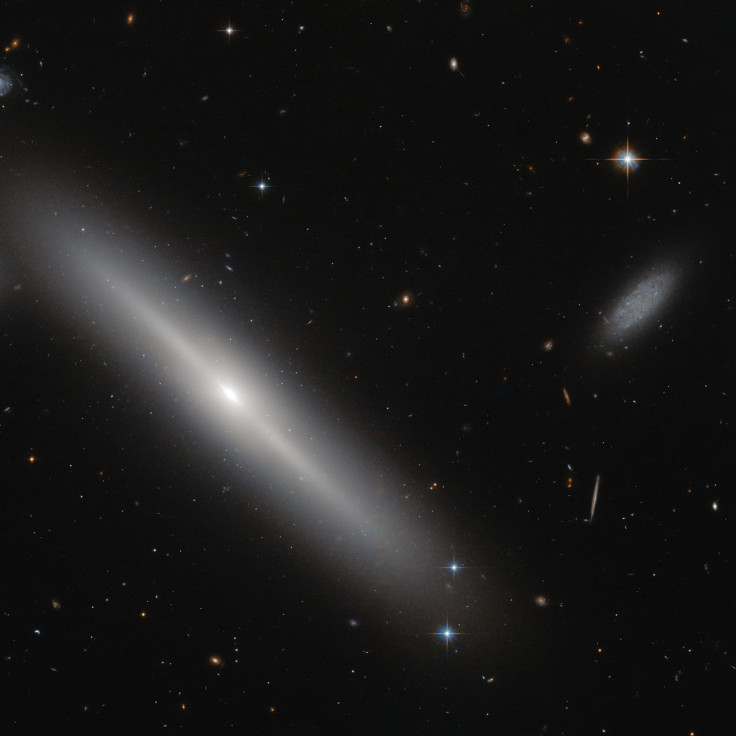Hubble Captures Swarm Of Star Clusters Orbiting Distant Lenticular Galaxy NGC 5308

The NGC 5308 is a galaxy that lies just under 100 light-years from Earth in the Ursa Major constellation. On Friday, NASA and the European Space Agency (ESA) released an edge-on image of this lenticular galaxy, with a host of star clusters encircling it “like bees buzzing around a hive.”
Lenticular galaxies have a central bulge but no spiral arms, and are sometimes referred to as “armless spiral galaxies.” These galaxies are often orbited by gravitationally bound collections of thousands of older stars, called globular clusters.
The photograph, which was captured by the Hubble Space Telescope, shows clusters of stars forming a delicate halo that orbits the main body of NGC 5308.
“Lenticular galaxies such as NGC 5308 are disk galaxies that have used up, or lost, the majority of their gas and dust. As a result, they experience very little ongoing star formation and consist mainly of old and aging stars,” ESA explained in a statement accompanying the photograph.
The photograph also shows a dim, irregular galaxy named SDSS J134646.18+605911.9 to the right of NGC 5308.
The Hubble Space Telescope, which recently turned 26, was launched aboard NASA’s space shuttle Discovery on April 24, 1990. Since then, it has not only captured an unimaginable number of truly spectacular nebulae and galaxies, it has also peered back over 13 billion years to look at our cosmos in its infancy, giving us, in the words of NASA’s associate administrator for Science Mission Directorate John Grunsfeld, “a front row seat to the awe-inspiring universe we live in.”
Most recently, on May 12, Hubble’s Wide Field Camera 3 captured the surface of Mars in stunning detail, revealing russet deserts pockmarked with craters and bright frosty polar caps shrouded in a thin haze of clouds.
© Copyright IBTimes 2024. All rights reserved.






















